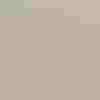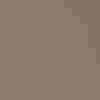
John James °å¿ü¤Öêü
John James °å¿ü¤Öêü (1785-1851) was not the first person to attempt to paint and describe all the birds of America (Alexander Wilson has that distinction), but for half a century he was the young countryãs dominant wildlife artist. His seminal The Birds of America, a collection of 435 life-size prints, quickly eclipsed Wilsonãs work and is still a standard against which 20th and 21st century bird artists, such as Roger Tory Peterson and David Sibley, are measured.
Itãs fair to describe John James °å¿ü¤Öêü as a genius, a pioneer, a fabulist, and a man whose actions reflected a dominant white view of the pursuit of scientific knowledge. His contributions to ornithology, art, and culture are enormous, but he was a complex and troubling character who did despicable things even by the standards of his day. He was contemporaneously and posthumously accused ofãand most certainly committedãboth . But far worse, he enslaved Black people and wrote critically about emancipation. He and sent the skulls to .
Complicating this history is his ambiguous background: Some researchers have credibly argued that °å¿ü¤Öêü was born to a woman of mixed race, which would mean that the most famous American bird artist was a man of color. Others insist that °å¿ü¤Öêüãs mother was white. °å¿ü¤Öêü himself lied about the circumstances of his birth, claiming to have been born in Louisiana. Whatever his circumstances of his birth, his beliefs and actions speak for themselves.
°å¿ü¤Öêü died decades before the first °å¿ü¤Öêü societies were founded, so how did °å¿ü¤Öêü come to bear his name? George Bird Grinnell, one of the founders of the early °å¿ü¤Öêü Society in the late 1800s, was tutored by Lucy °å¿ü¤Öêü, John Jamesãs widow, and chose the name because of °å¿ü¤Öêüãs stature in the world of wildlife art and natural history.
John James °å¿ü¤Öêü was born in Saint Domingue (now Haiti) in 1785, the illegitimate son of a French sea captain and sugar plantation owner. The identity of his mother is in dispute; she could have been a French chambermaid named Jeanne Rabine, but there is compelling evidence that she was a mixed-race housekeeper named Catherine ãSanitteã Bouffard. At the age of 5ãwhich coincided with the beginnings of the Haitian Revolutionã°å¿ü¤Öêü was sent to Nantes, France and was raised by his fatherãs wife, Anne. There, John James °å¿ü¤Öêü took an interest in birds, nature, drawing, and music.
In 1803, at the age of 18, he was sent to America, in part to escape conscription into Emperor Napoleonãs army. He lived on the family-owned estate at Mill Grove, near Philadelphia, where he hunted, studied and drew birds, and met his wife, Lucy Bakewell. While there, he conducted the first known bird-banding experiment in North America, tying strings around the legs of Eastern Phoebes; he learned that the birds returned to the very same nesting sites each year.
°å¿ü¤Öêü spent more than a decade as a businessman, traveling down the Ohio River to western Kentuckyãthen the frontierãand setting up a dry-goods store in Henderson. He continued to draw birds as a hobby, amassing an impressive portfolio. He also bought and sold enslaved people during this time to support his venture. °å¿ü¤Öêü was successful in business for a while, but hard times hit, and in 1819 he was briefly jailed for bankruptcy.
With no other prospects, in the early 1820s °å¿ü¤Öêü set off to depict Americaãs avifauna, with nothing but his gun, artistãs materials, and a young assistant. In 1826, he sailed with his partly finished collection to England, where his life-size, highly dramatic bird portraits, along with his embellished descriptions of wilderness life, hit just the right note at the height of the Continentãs Romantic era. °å¿ü¤Öêü found a printer for The Birds of America, first in Edinburgh, then London, and later collaborated with the Scottish ornithologist William MacGillivray on the ornithological biographiesãlife histories of each of the species in the work.
The last print was issued in 1838, by which time °å¿ü¤Öêü had achieved fame and a modest degree of comfort, traveled the country several more times in search of birds, and settled in New York City. He made one more trip out West in 1843, the basis for his final work of mammals, the Viviparous Quadrupeds of North America, which was largely completed by his sons and the text of which was written by his long-time friend, the Lutheran pastor John Bachman (another anti-abolitionist whose daughters married °å¿ü¤Öêüãs sons).
°å¿ü¤Öêü died at age 65. He is buried in the Trinity Cemetery at 155th Street and Broadway in New York City.
Get °å¿ü¤Öêü in Your Inbox
Let us send you the latest in bird and conservation news.




